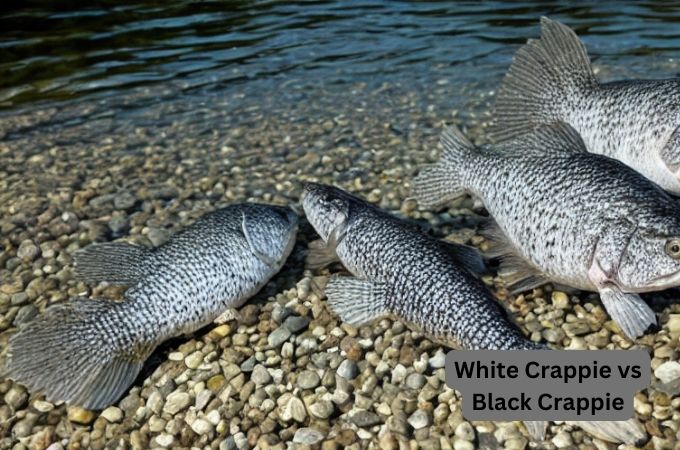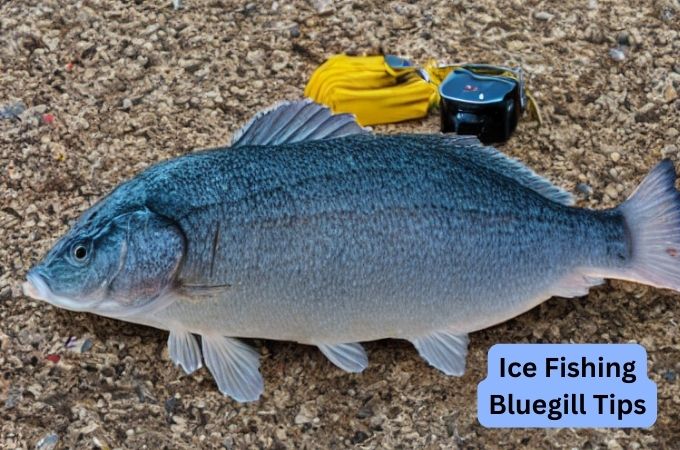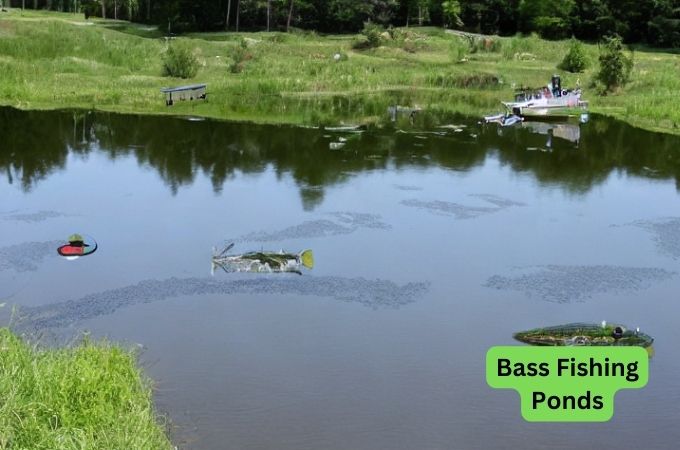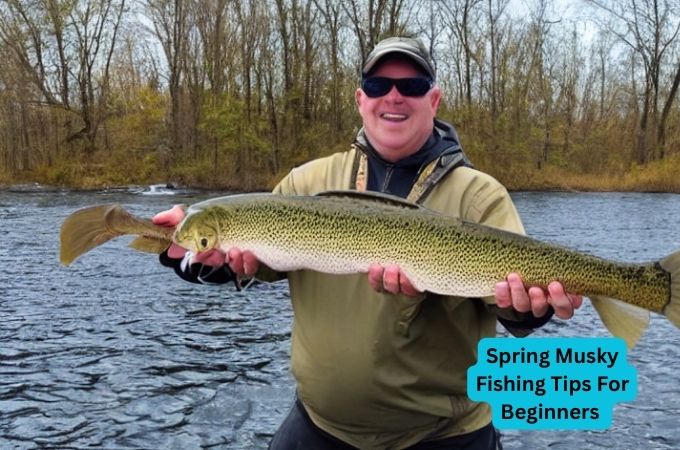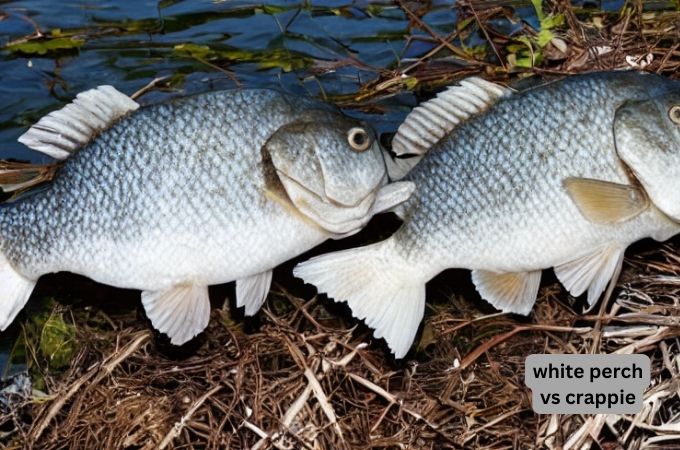Fall Bass Fishing Tips | You Should Know These Tips To Become An Expert
Today we discuss Fall Bass Fishing Tips. When it’s fall, it is not just the trees that change but the water bodies do too. The only reason you do not notice it is because the trees show the change while the water’s change is close to being invisible.
Since the water changes in a number of criteria, your fishing method changes too. With these changes, you have two possibilities coming your way. One is where you end up with more basses than you were expecting. The other is the exact opposite.
In order to not be a victim of the latter possibility, you have to know more and try more. Apparently, you have to know the changes fall brings in the water and also the fish behavior. Moreover, you have to follow some fall bass fishing tips in order to level up your fishing technique.
If you do not keep track of what happens and what you have to do with it, you have increased chances of ending up with almost no fish. Therefore, take a simple walk through what happens in the fall, how fishes react to it, and finally, how you should handle it.
The Changes You Have To Be Aware Of
It is, apparently, not just the weather and water that changes, fishes change their behavior too. The change in the fish’s behavior requires you to change yours towards them as well.
The Changes Of The Water
1. The Temperature Of The Water Decreases:
With summer leaving and winter approaching, it’s natural that the temperature will drop. Apparently, the colder water has a lot to do with what the fishes will do. They cannot just put a sweater on and stay where they always stay right? That’s why the temperature of the water is something you should keep in mind.
2. The Oxygen And Nutrients Get Dispersed Throughout:
You might already know that cold water is heavier than warm or normal water. So, when fall approaches, the top warm water from summer starts to cool down. Apparently, this warmer water above was what actually kept hold of the oxygen and nutrients. In fact, more oxygen and nutrients were dissolved in the upper levels while the deeper colder water had less of it.
When the weight of the top or shallow water increases to the decreased temperature, it sinks to the bottom and disperses the oxygen and nutrients throughout the lake or water body. Therefore, fishes won’t find comfort in just the shallow waters but throughout the whole water body.
The Changes In Bass Behavior
1. They Spread Throughout:
In summer, when most of the oxygen and nutrients are available in the shallower waters, basses tend to be there as well. Finding bass in summer is easy as you know where to look for them- the shallower water.
However, when the temperature decreases due to the dissolved oxygen and nutrients being available throughout, the fish also spread throughout. You can find them in both deep and shallow water as they will find comfort anywhere.
Furthermore, with the decrease in temperature, they tend to be present more in deeper waters. So, finding bass during the fall is more challenging than finding them in the summer. Their range expands to all of the lake or river rather than a few spots.
2. They Move In Groups:
The good thing about this is that once you find where they are, you find many of them. Why they move together is not something we can tell, maybe it’s for warmth or safety. However, as they do, you only have to focus on finding just one, and voila! You have more than you anticipated!
3. They Are More Active:
While we, the humans, might become the laziest in colder temperatures, basses do exactly the opposite. With a decrease in temperature, they become more active and aggressive. So, you might throw anything at them and they will get super aggressive. Moreover, their metabolism rate increases during this colder season. As a result, they look more aggressively for food. The more aggressive and active they are, the better for you. It will be easier for you to detect their presence and capture them.
However, handling them and bringing them in might become a problem as they will fight more aggressively.
4. The Basses Eat Natural Foliage:
Since the digestive system will do its job faster in this season, the basses will be hungrier and will eat about anything. By anything, we mean natural foliage. It will find the location of the natural foliage in any type of water and eat it. You have to keep this in mind as the more your baits resemble natural foliage the better.
5. The Wind Is On Your Side:
Apparently, the wind helps the water to mix and stabilize. This helps the dissolved oxygen and nutrients to mix up and spread. In this condition, you will find it easier to find basses.
Because they won’t go too deep in search of comfortable conditions, the wind helps them find comfort easily. Likewise, you find them comfortable.
6. They Tend To Come Out Of The Creeks To Rocky Or Other Areas:
With the initial decrease in temperature, the basses come out of the creeks to the creek channels. They find shelter around rock ledges, boulders, and woody areas. Timber and brush piles are quite common among where the basses move to. When the temperature becomes cooler even faster, basses move towards channel swings or towards the main lake that has more chunk rocks and rough stuff.
However, in lowland reservoirs, basses stay in shallow waters for a longer time. When the temperature drops, even more, they tend to move to secondary points and flats.
So, these are basically how the water bodies and the basses deal with the changes that come with fall. What you have to do is be aware of each of these changes and take action for each of them. Because your success in fall bass fishing depends highly on how well you deal with these factors. If you do not consider these, you have to depend on your luck too often to catch a bass.
Fall Bass Fishing Tips
Here is a list of a few things that you should and can do to get better results when fishing for basses during fall.
1. Move Fast And Cover More Distance:
When it is just fall, predicting the location of the basses is very difficult. You can only keep looking for them by moving. In fact, you may have caught a lot of bass in one place just a few days ago or even the day before and when you look in the same place again, it’s empty.
That’s how much unpredictable the basses are in the fall. They do not stay in one place, they keep roaming everywhere. This is not only because of the weather but because of their increased metabolism and activity as well. Therefore, you should check all the depths of the water and go fast. If you do not find any in one place, chances are there are not any nearby either.
2. At The Beginning Look Deep Then Move Shallow:
Basses tend to move from the deeper areas to shallower water as it gets cooler in the fall. So, you will get the best results when you look deep at the beginning of fall and then around the time before mid-fall, look in the shallower water. Apparently, the wind and the other conditions make the roaming food of basses move to shallower waters. As a result, the basses follow them to the shallower waters to meet their increased demand for food. Therefore, focus on the shallower waters when it is more of a fall.
However, basses may be spread throughout the water body all along the fall season as well. It depends a lot on the kind of lake you are looking at too. For example, in lower reservoirs, they stay in shallow water longer.
3. Go Where The Bass Food Goes:
No matter which season it is, neither basses nor any other living being can live without food. You know when to look for basses in deep water and when in shallow. However, how would you know there is a higher chance of basses being available at a certain place? It is simple! Look for what they eat.
The weather makes the roaming species that the bass eats change places. These species which are the bass food usually move to shallower waters due to the wind and other weather conditions. So, what you have to do is, look for them. If you find them, chances are your target is nearby keeping watch.
4. Look In Creek Channels, Swings, Fence Rows, Ditches, etc:
When you are looking for bass in flat water, you need some key places to search. These generally include those locations which turn into a point or are by the side. Because when you hide, you hide in corners and hidden locations, not in the open. Therefore, while you search in flat water, search carefully in these points like the small creeks, their channels or swings, fence rows, etc.
5. Look Where Piles Of Timber, Wood, Or Rocks Are:
It is apparently not just the humans who feel the need for shelter, the fishes do too. And, their shelter is those rocky or woody bodies you find underwater. Therefore, look for these kinds of piles of rocks or woods as there may be a bunch of basses waiting to be discovered and captured.
6. Keep Three Kinds Of Baits With You:
By three kinds of baits, we mean, one for deep water, one for top or shallow water, and the other for the water between them. As you already know, it is not possible to predict where the bass will be in the fall.
They change their location rapidly with changing temperatures and moving food. Therefore, it is best if you look for bass in shallow water for the first day, then move deeper and deeper. But, once you find one, you are sure to find many more at the exact same location.
7. Change Your Pattern Often:
There are a few kinds of patterns that come in very handy when you are fishing for basses. For example, you can start by fishing in steep breaks like channel turns with rocks and woods. If this does not bring your bass, you can fish along weed lines. Apart from that, you can fish on top water too. There is no end to the patterns you can follow to fish for basses. If one is not working, chances are it won’t work anytime soon. Therefore, you have to change your fishing patterns often as the fishes change their moving patterns too.
8. Use Baits That Look And Smell Like Natural Foliage:
During the fall, basses often eat natural foliage. Therefore, you can use baits that look and smell like natural foliage. Apparently, basses can smell and see baits. So, make sure your bait does not have any chemical or other unnatural smell on it. Some good choices for baits are crank baits, jerk baits, swim baits, and topwater baits. You should pay attention to the colors as well since basses can see the colors. In fact, combinations of white and grey or chrome and black or chrome and blue are good for catching basses.

early fall bass fishing techniques
Early fall is a great time to go bass fishing because the fish are transitioning from their summer patterns to their fall patterns. In order to catch them, you’ll need to adjust your techniques accordingly.
Here are three tips for early fall bass fishing:
1) Use smaller lures:
As the water cools down, the fish will start to feed more cautiously. Lures that are too big or too flashy may scare them away. Try using smaller lures that resemble the baitfish they’re feeding on.
2) Use soft plastics:
Soft plastics are a great choice for early fall bass fishing because they imitate live bait very well. Rig them Texas-style with a weight on the bottom and a hook on top, or Carolina-style with the weight on the bottom and the hook in the middle.
3) Fish deeper water:
As the water cools down, the fish will start to move into deeper water where they can find stable temperatures. Look for them in submerged creek channels, deep holes, and other areas where they can find shelter from the cooler water.
following these tips, you’ll be sure to have a successful early fall bass fishing trip!
Frequently Asked Questions (Faqs):
Answer:
the best lures for September bass fishing vary depending on the specific water conditions and weather patterns in your area. However, some popular lures that can be effective during September include crankbaits, soft plastics, and spinnerbaits. experimentation with different lures will help you determine what works best in your particular location.
Answer:
Bass fishing can be hard because the fish are often very picky about what they eat, and they can be difficult to spot in murky water. In addition, bass are fast and powerful predators, so you have to be careful not to let them get away.
Answer:
Bass fishing is believed to have originated in the United States. The first bass fishing tournaments were held in the early 1900s.

In Conclusion:
The fall season can either be your turn towards fortune or your turn against it. What it turns into depends a lot on how you fish. And, how you fish depends a lot on how much you know and also your skills.
Therefore, your path to success in fall bass fishing is knowing more and more about how these species move and live. Based on that you have to formulate your strategies and go prepared. The fall bass fishing tips should help you achieve success in catching a lot of basses.
So, go equipped with the knowledge and everything knowledge tells you to equip yourself with. And, there will be no fish or person that can stop you from coming home victorious with a meal for many.
